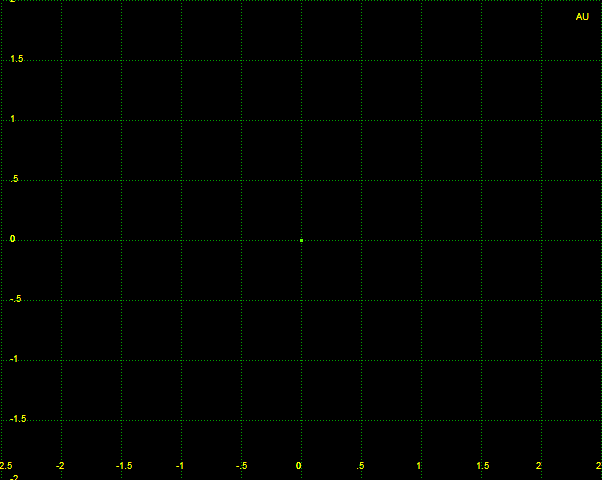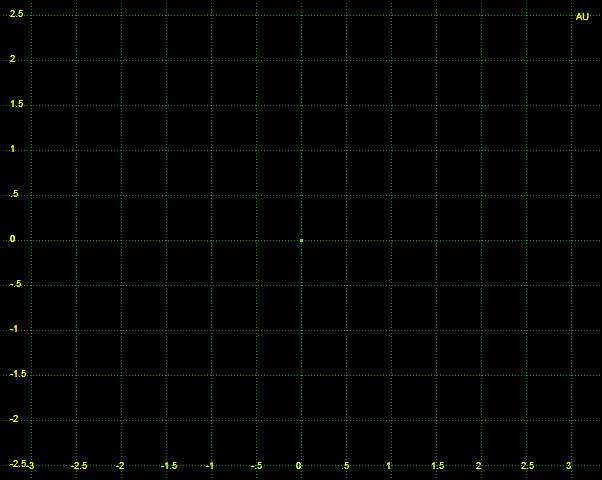Copyright (C) 2016 by Aldo Vitagliano
Copyright information: Text, images and animations can be freely reproduced and published elsewere, provided credit is given to the author.
When the reference frame is not inertial: a Ptolemaic view of orbits.
 The path of Venus in a geocentric frame.
The path of Venus in a geocentric frame.
To set the origin of the coordinates on the Sun or at the barycenter of the solar system makes things simple. To set the origin of the coordinates on an orbiting planet makes things beautiful.
This animation shows how Venus moves with respect to a fixed Earth. The first half of the movie shows the path of Venus during a 8 years time span, starting at y 2000. During a period of 8 years, Venus makes sligthly more than 13 orbits around the Sun, corresponding to sligthly less than 5 synodic periods. This means that every 8 years, Venus is just a little bit late with respect to the position the planet had 8 years before, with respect to Earth, Sun and a fixed celestial frame. This is shown by the nice arabesque drawn by the light cyan geocentric path of Venus (the white circle is the geocentric path of the Sun).
After the 8 years cycle is completed, the animation changes, showing a new 8-years cycle in each frame, for a total of 510 frames (4080 years). Since each cycle is a little bit late with respect to the previous one (by about 2.4°), the arabesque appears to precess clockwise, making one full round in about 1216 years (152 frames).
The epicycles of Mars.
This animation shows the path of Mars with respect to a fixed Earth, along a time span of 79 years, corresponding to 42 orbits of the red planet and to 32 oppositions. The white circle is the geocentric path of the Sun.


